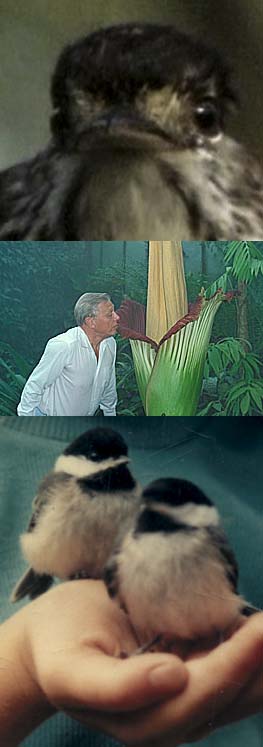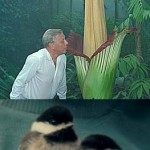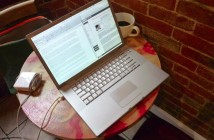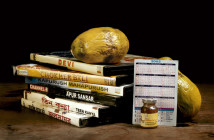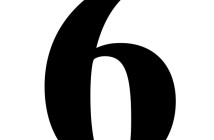A contemporary riddle: How many Ansel Adams calendars does the Sierra Club have to sell to support awareness of the John Muir trail? Based on sales, many admire a tree more in a photograph, which is perhaps the ultimate irony - embalming its living image onto its own processed carcass.
In conjunction with the Berwick Research Institute, Second Gallery is currently exhibiting the work of Pam Larson, a recent BRIArtist in Research alum. This exhibit features a variety of video work that is either shot firsthand or interrupted through editing (or both) in an attempt to jam the viewer’s passive response to how "the natural" is idealized through technology. Of the work, Larson says in her residency statement: "These projects have come out of an interest in how we perceive and understand nature. Specifically, I’m concerned with the ways in which technology mediates our understanding of the natural world."
Consider how much of our understanding comes through what is translated to us through wires. What frames this interest in the first place and how do we navigate this difference that we define as "the natural"? How much of what we think we know about "the natural" do we really want to understood?
Among the exhibit - three small videos, playing on small LCD screens on the wall: a continuous loop of moths under a streetlamp, blurred by the camera's inability to autofocus render a clear image dim light; the full moon taped handheld in the center of the frame, a feat of endurance (for both the photographer and the viewer) noted in the shakiness, coping with tying to frame up the perfect image with as little supplemental support as possible; a sunrise restored from a high speed effect segue, slowed to its real time, experiential speed.
Also on the main floor is a monitor of a woodpecker, animated from one frame endlessly looped, creates the ambient sound of one peck. Repeated over and over again, the woodpecker's expected characteristic is obstinately amplified for our recognition of what it is, but never for what purpose the bird has. In the loft in an untitled video distilled from a BBC nature documentary, The Life of Birds, which has been reedited, slowing down the movement of the original panning and cuts to allow the viewer to actually "savor" the splendor, as if we might be chucking quarters into the stereoscopic binoculars at the edge of a designated scenic overlook.
As part of this exhibit, but not immediately present in the space, is a participatory element where a phone has been placed an unspecified wooded area with a number to call (617-880-9925). Visitors are invited to call and not only listen to the trees, but speak to them as well, allowing for the type of long distance communion that the sponsorship Mutual of Omaha could never provide.
This aesthetic of the natural is not so much an appreciation of the purity, essence, or wonder, but an abhorrence of what it actually represents (Literally, when was the last time you went camping and walked around outside of the tent. You know, for enjoyment?). This aesthetic is not defined in positive terms; the aesthetic is what the mastery of the technology can recreate for us, without the threat of insect bites. Plainly stated, "the natural" is an aesthetic of contemporary world an it can only exist in the to the absence of actual experience. Therefore, we can never have knowledge of the natural, because our understanding of it would dissolve, making it impossible to communicate such a concept to others. To discuss "the natural" it must be mediated; it must be invented.
Larson's videos are not a expose of techological intrusion into where it doesn't belong, but an investigation into whether or not we can develop a new awareness to our ongoing mediated experiences. Larson's video projects, in effect, are a response to the sanitized versions of nature programming. Would you know to be concerned with what Sir David Attenborough told you if he didn't present it to you in the first place? Even though regarded as an expert, aren't his presentations equally mediated? How much of Sir David's information comes via self-evidence?
The appreciation of the natural is a social activity of mutually agreed responses. Many contemporary campers are not loners; they are joiners defined by the latest North Face fashion (which is often defined by the novelty of its nature repellent technology) Larson's new video projects are an earnest attempt to render landscape through a lens. In them is a desire to create a new response in our relationship to the mediated image which is not based on artifice, but on the exchange of that is shared, instead of consumed. This exhibition does not criticize video technology, but instead shows a loyalty to video and its abilities, in spite of its open failure to give us any knowledge about what it is being photographed. Can "the natural" be unmediated, unedited and have the same emotive response? By its definition, it never can. But the attempt laid bare is perhaps the most revealing of all: to accept our own desire participate socially created meanings, and at the same time, define ourselves on how we are interesting we are by how we are different from what surrounds us.
Links:
Second Gallery
Berwick Research Institute
Pam Larson AIR - BRI
"Pam Larson: New Work" is on view until Spetember 2nd at Second Gallery located at 516 E. 2nd Street in South Boston (Red Line/Broadway, then to #9 bus).
A closing reception is secheduled for this Saturday, September 2nd, from 6-9 PM.
All images are courtesy of the artist and Second Gallery.

